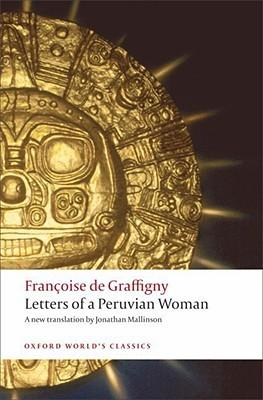 “It has taken me a long time, my dearest Aza, to fathom the cause of that contempt in which women are held in this country …”
“It has taken me a long time, my dearest Aza, to fathom the cause of that contempt in which women are held in this country …”
Zilia, an Inca Virgin of the Sun, is captured by the Spanish conquistadores and brutally separated from her lover, Aza. She is rescued and taken to France by Déterville, a nobleman, who is soon captivated by her.
One of the most popular novels of the eighteenth century, the Letters of a Peruvian Woman recounts Zilia’s feelings on her separation from both her lover and her culture, and her experience of a new and alien society. Françoise de Graffigny’s bold and innovative novel clearly appealed to the contemporary taste for the exotic and the timeless appetite for love stories.
But by fusing sentimental fiction and social commentary, she also created a new kind of heroine, defined by her intellect as much as her feelings. The novel’s controversial ending calls into question traditional assumptions about the role of women both in fiction and society, and about what constitutes “civilization”.
Click on the links below to hear Jonathan Mallinson of Trinity College, Oxford introduce his new translation of Françoise de Graffigny’s novel.

Who was Françoise de Graffigny?
- Françoise de Graffigny (1695-1758) is the author of one of the most remarkable novels of the eighteenth century; she was also one of its most gifted correspondents. But despite being born into the minor aristocracy, her life was far from an easy one. Click here for an introduction to her life and times. [4:12]
Beyond the conventional
- The Letters of a Peruvian Woman were inspired by several literary genres which were then in fashion, including the satirical epistolary novel in which a supposed foreign visitor provided an outsider’s perspective on French mores. It also appeared at a time when there was a vogue for all things Peruvian. Learn more about what influenced Graffigny by clicking here. [4:30]
- Graffigny did much more in her book than merely fulfil the conventional expectations of readers of the genre in which she was writing. As Jonathan Mallinson explains, her book “feminized” the genre, while at the same time presenting a heroine who was far from conventional. Click here to hear more. [3:22]
- Graffigny’s heroine Zilia offers her critique of French society – its love of luxury, its social customs, the disparity of rich and poor – in a manner which would have been familiar to readers of other letter novels of the time. But she goes further, and engages with the theme of the inadequacy of the education and lot of women in French society. Click here for more on her treatment of this theme. [ 3:43]

Success, controversy, and alternative endings…
- Letters of a Peruvian Woman was one of the best-selling novels of the eighteenth century, but it also provoked controversy because of the heroine’s unwillingness to settle for a conventional “happy ending”. So controversial was the ending of the novel that two sequels quickly appeared that “put right” the perceived shortcomings of the novel. Find out more by clicking here. [4:30]
- After a long period of neglect, Letters of a Peruvian Woman has been rediscovered by critics and readers in the past twenty-five years. For understandable reasons it has been celebrated as a proto-feminist text and Zilia held up as a model of the woman writer. But is there more to the text than that? Click here to hear Jonathan Mallinson’s view. [3:57]
- One of the most interesting aspects of the novel is the way in which Graffigny charts her heroine’s evolution from lamenting lover to critical social observer. Click here to hear Jonathan Mallinson read an extract from his new translation of the book which shows Zilia’s new-found social awareness coming into being. [4:29]

2 Comments